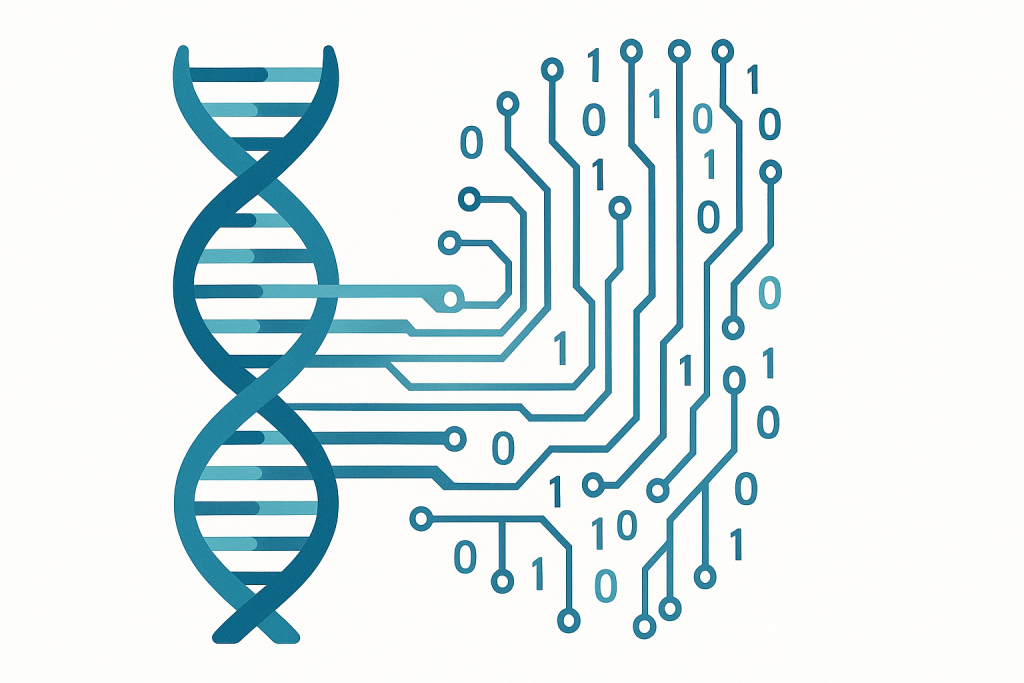Tomorrow’s innovators won’t just write code — they’ll write life.
The Next Frontier of Work
The 21st-century job market is already rewriting itself.
In the same way that the digital revolution created jobs that no one foresaw — app developer, data scientist, UX designer — the biological revolution is now merging with software to form a new class of careers.
This intersection, where biotechnology meets computer science, is producing a new kind of professional: the biocoder — someone fluent in both living systems and digital logic.
From AI-driven drug design to sustainable materials made by engineered microbes, these fields are evolving faster than curricula. The challenge for educators? Preparing students not just for the jobs that exist, but for those that don’t — yet.
What Is the “Biocoder” Generation?
Biocoders are hybrid thinkers who combine biology, coding, and design.
They understand DNA as a data structure, cells as processors, and ecosystems as interconnected systems. Their work spans across fields like:
- Bio-design: creating sustainable materials, from lab-grown leather to algae-based plastics.
- Genetic data analysis: interpreting genomes using computational tools to drive personalized medicine.
- AI-driven biology: using algorithms to predict protein folding, drug efficacy, or crop resilience.
- Synthetic ecosystems: designing living systems that can adapt, regenerate, or self-optimize.
In short, biocoders operate at the intersection of life, logic, and learning — and their skillset is as much creative as it is technical.
Why This Shift Matters
The world’s biggest problems will not be solved by single disciplines.
Climate change, food security, and healthcare innovation require integrated, adaptive solutions. The biocoder generation represents a new type of workforce — one that thinks in systems rather than silos.
Students entering this world must learn how to:
- Translate between biological and digital models.
- Work with both code and cells.
- Understand the ethical impact of living technologies.
This isn’t about memorizing content; it’s about building cross-disciplinary fluency — the ability to combine insights from multiple domains to create something entirely new.
What Education Needs to Change
Preparing students for the biocoder future means breaking down subject walls.
Most schools still teach science and computing separately, even though the future demands their fusion. A forward-facing STEM curriculum should emphasize:
- Integrated projects: combining biology, coding, and design thinking.
- Data literacy: teaching students to analyze and visualize biological data.
- Simulation tools: using software to model genetics, ecosystems, and cell behavior.
- Ethical reasoning: guiding students to reflect on the societal impact of living technologies.
Students who can navigate between wet labs and code labs will have an edge in every emerging field — from precision agriculture to regenerative medicine.
The Skillset of the Future Biocoder
To prepare for jobs that don’t yet exist, students must master adaptive skills that transcend technology cycles. The key foundations include:
- Computational thinking: approaching biology as an information system.
- Experimental literacy: designing and testing real or simulated experiments.
- Collaborative intelligence: working across disciplines, from engineers to ethicists.
- Creative synthesis: using design thinking to apply science in meaningful ways.
In essence, the biocoder is not just a technologist — they’re a translator between digital and biological worlds.
Ethics and Responsibility in a Living Tech World
With great innovation comes great accountability.
As biotechnology becomes programmable, ethical education is no longer optional. Students must understand the potential consequences of manipulating living systems — from genetic privacy to ecological balance.
Teaching responsible innovation ensures that the next generation builds technologies that are not only powerful, but also purposeful.
How Parents and Educators Can Guide This Shift
You don’t need a lab or AI system to nurture biocoder skills. Start by:
- Encouraging interdisciplinary curiosity — let biology and technology mix in projects and conversations.
- Promoting open-ended learning — allow students to ask “what if” questions without fixed answers.
- Connecting learning to real-world data — from climate sensors to genome databases.
When students see biology not as a static subject but as a living system they can model, code, and design, they begin to see themselves as contributors to the next wave of innovation.
The Takeaway
We are raising the first generation that will code both silicon and cells.
Education must evolve from teaching isolated disciplines to fostering adaptive, ethical, and systems-oriented thinking.
The biocoder generation will not wait for the future — they are building it now.
The question for educators and parents isn’t whether these jobs will exist, but whether we are ready to prepare students for them.
The future belongs to those who can think in code and live in context.


